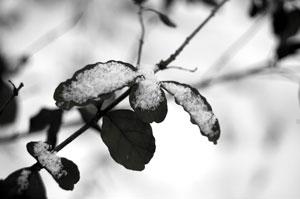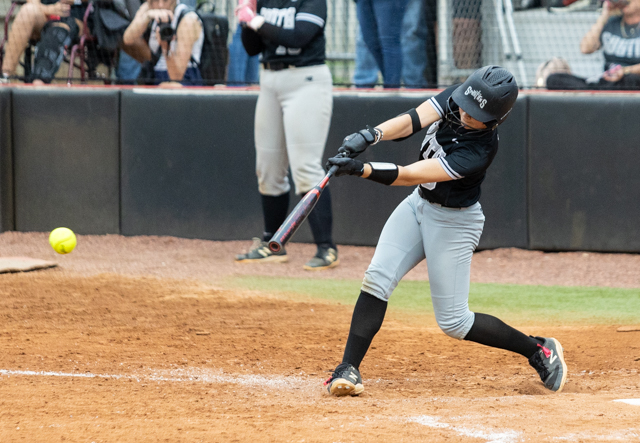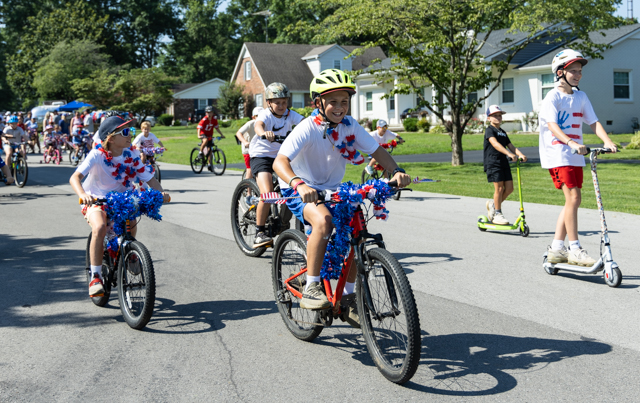Holiday and Winter Photography
Published 12:00 am Friday, December 3, 2010

- Snow Details. Photo by Amber Flowers, Soul Gaze Photography
When the cold wind blows the leaves change to snow. Houses are decorated in red, green and gold with glowing lights spreading warmth and holiday cheer into the darkness of night. It is a time for holidays and a time for families and friends. America is full of religious diversity, and as a result we celebrate these holidays with different traditions. One tradition remains the same: we all come together to enjoy time with our families and friends. These memories last us many years and many generations. What better way to preserve these memories than with photography?
Photography is timeless, classic and a valuable investment. With the economy constantly changing, family traditions can change as a result. Photography can give future generations a glimpse into past family traditions whether you hire a professional photographer to invest in family portraits or choose to photograph your family’s holiday décor or gatherings yourself. Many families also enjoy arranging for cards to be made to give out over the holidays. Cards are available in many sizes and shapes containing images of the family, custom designs or graphics, and a personal message inside. They can be created by a professional photographer or you can look up templates online and design them yourself using your digital images and Photoshop or other various programs. There are even many websites claiming to be great for designing your holiday cards all at varying costs. Do the research and compare them to find what best suits you.
The great thing with this time of year is the endless photographic opportunities. Depending upon how serious you wish to be with your photos, there are many things to capture. The cooking and serving of the holiday feast and the socializing afterwards should be captured as it happens with little posing. You will want to remember the scene as it happens. The less you stop and pose someone, the more natural the photos and the better you will remember the day. The same holds true as presents are being opened and food is being enjoyed. Don’t get so caught up in your photography that you forget to enjoy the holiday or alienate a guest or family member with your camera constantly in their face! Now is also a great time to learn how to photograph in low light without flash in situations where someone could be disturbed by the bright light. It’s best to avoid using flash indoors when possible. Indoor flash (especially on camera flash) can cause harsh shadows behind your subject, unless it is bounced or reflected off a diffusing surface such as the ceiling or has a diffuser attached.
People that don’t like their photo being taken will never forget about the camera and relax as long as they see the flash. If you can’t use bounce flash, adjust the intensity settings on your camera (if able) so that the built in flash isn’t so harsh or purchase a diffuser for your on-camera flash. In cases where there is no option available, such as with some point and shoot cameras, avoid being too close to your subject which can overexpose them. If you start to notice people becoming frustrated or you feel you have captured what you wish, it’s time to move on to decorations. Most families use their best serving dishes, silverware and take the time to meticulously set the table and decorate the house inside and out. Use your macro lens or camera setting to capture sharp shots of these details. Try different angles, filling the frame with one subject or controlling depth of field and pay attention to what is going on in the background.
A decorated Christmas tree can be interesting with presents, lights, tree topper and decorations to photograph and make perfect backdrops for family photography. You can focus in on one ornament or explore the creative side of Christmas lights by learning how to capture tree or candle lights with bokeh creating the popular circular blur seen in the background of shots with light sources. Search for ‘bokeh’ online for tutorials and equipment requirements. The best way to photograph outdoor lighting decorations is on a calm and still night, without flash, using a tripod and long exposures (shutter speed) along with a small aperture (f.8, f.11 or higher) to keep everything sharp. The length of time required for the shutter speed will depend upon the brightness of the lights and the ambient light such as a brightly lit neighborhood, snow on the ground or moonlight. Try to keep your ISO settings low to avoid excess noise since a lot of your image will involve black making noise more obvious. During parades use a fast shutter speed. Indoors the same applies because you want to capture the ambiance and serenity of the lights or candlelight without over illuminating the scene as would happen with a flash.
Another popular winter photography subject is snow and ice. Currently The National Weather Service and NOAA have forecasted a warmer than usual winter for our area. That doesn’t always mean it won’t snow, just that as a photographer it is very important that you be prepared with the knowledge to capture it in case it does! Dress in many layers with the plans that you will be outdoors for some time and have a way to cover and protect your equipment from the cold and moisture. Don’t forget gloves, but compensate for the need to change settings on your camera and practice a few glove shots indoors. You will want to use a sturdy tripod with water protection coating or wrap the legs in plastic to avoid moisture damage. It’s very difficult to hold the camera steady with gloves or when you are shivering. The best time to photograph snow is in early in the morning while it is freshly fallen. The snow will still be covering branches, leaves and plants and won’t have melted yet.
As the snow begins to melt, you can utilize long exposure to blur the moving water in a melting creek or a sharp macro lens (or the macro setting on your camera) to photograph the edges of the ice or close-up images of snowflakes. When photographing snow, wear sunglasses and use a UV filter on your camera if needed for protection. You don’t want to damage your eyes or camera! Snow acts like a natural softbox so portraits are bright and evenly lit, but can also overexpose subjects. Many cameras’ leave a blue cast on the white snow resulting in the snow not being truly white. This cast affects the overall quality of the image, but can be removed in Photoshop or another program.
To remove the color using Photoshop, select ‘hue/saturation’, select ‘blue/cyan’ and reduce the ‘saturation’ to ‘0’. If your sky has blue that you want to leave, you can use a soft edge brush and paint back the blue sky using the history brush. Change the size and opacity when near edges and remember to zoom in and out often so you don’t miss anything that could ruin a print. Black and white conversion is popular for show photos. If choosing to leave your photos in color, pay attention to your white balance while photographing and during post processing on your computer.
Remember also to make time for stopping for photos when you are traveling to your family. You never know what you will see and you might as well enjoy the trip and your holidays. Whatever the season brings, photography will always be a part of the time you share and your memories there!
 About the author: Amber Flowers is a photographer, digital artist and writer most known for her infrared photography and the ‘fine art’ feel to her work. She is a member of The League of Creative Infrared Photographers and Founder of Southern Kentucky Photographer’s Club. Amber resides in Glasgow KY with her husband, two children and several pets. You can learn more about her on her website: www.soulgazephotography.com
About the author: Amber Flowers is a photographer, digital artist and writer most known for her infrared photography and the ‘fine art’ feel to her work. She is a member of The League of Creative Infrared Photographers and Founder of Southern Kentucky Photographer’s Club. Amber resides in Glasgow KY with her husband, two children and several pets. You can learn more about her on her website: www.soulgazephotography.com






